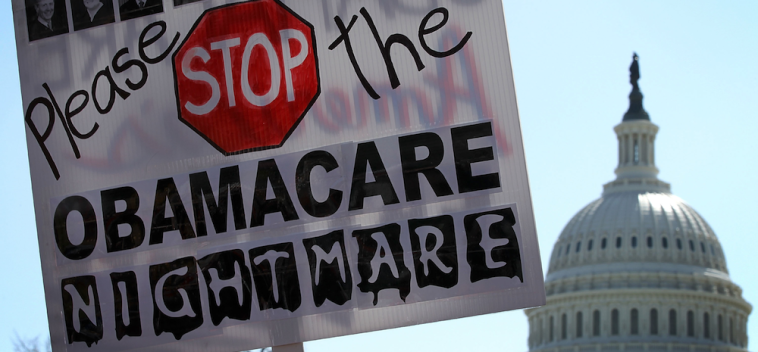In case you thought Shutdown Theater was the only way in which the Obama administration chooses to display its stubbornness (from the Washington Post):
Videos By Rare
“Major insurers, state health-care officials and Democratic allies repeatedly warned the Obama administration in recent months that the new federal health-insurance exchange had significant problems, according to people familiar with the conversations. Despite those warnings and intense criticism from Republicans, the White House proceeded with an Oct. 1 launch. …
“Two allies of the administration, both of whom spoke on the condition of anonymity because of the controversy surrounding the rollout, said they approached White House officials this year to raise concerns that the federal exchange was not ready to launch. In both cases, Obama officials assured them there was no cause for alarm.
“Robert Laszewski, a health-care consultant with clients in the insurance industry, said insurers were complaining loudly that the site, www.healthcare.gov, was not working smoothly during frequent teleconferences with officials at the Department of Health and Human Services before the exchange’s launch and afterward. ‘People were pulling out their hair,’ he said.”
Judging by the descriptions of the administration’s response reported by the Post, it seems the attitude at the White House amounted to, “What, me worry?”
This refusal to postpone the exchange website’s launch even though it was shaping up as unworkable stands in stark contrast to the administration’s decision to delay Obamacare’s employer mandate by one year because … it was shaping up as unworkable.
But it also reflects a certain combination of arrogance and miscalculation on the administration’s part. Officials keep blaming the exchange website’s problems on unexpectedly high traffic, but those claims ring hollow according to technology experts cited in the Post’s story:
“David Brailer, who worked as HHS’s first national coordinator for health information technology during the launch of the Medicare drug benefit in 2006, said the administration could have anticipated that the opening of the federal exchange would trigger a rush of Americans onto the Web site, either as onlookers or outright buyers.
“He pointed out that the exchange was built to accommodate 50,000 to 60,000 visitors at a time — fewer than half as many as the enrollment site for the Medicare drug benefit could handle. The number of older Americans eligible for the drug benefit was far greater than the group of uninsured people who will be allowed to buy insurance through the health exchange, Brailer said, but many elderly patients didn’t have home computers at the time, compared with the near-universal access to the Web that exists across the United States today. For a new program that’s had as much advertising as the Affordable Care Act, building a Web site for just 60,000 people at a time ‘is weird. The math just doesn’t add up,’ he said.
“John Engates, chief technology officer at service provider RackSpace, said the government should have been able to prepare for the type of traffic that the site has experienced.
” ‘I think that any modern Web company would be well prepared for a launch of this scale,’ said Engates.”
Engates went on to say the transactions are not complex, but in fact there are indications the exchange website was built not only with too little capacity but also with too much complexity. As Reuters reports:
“One possible cause of the problems is that hitting ‘apply’ on HealthCare.gov causes 92 separate files, plug-ins and other mammoth swarms of data to stream between the user’s computer and the servers powering the government website, said Matthew Hancock, an independent expert in website design. He was able to track the files being requested through a feature in the Firefox browser. …
“He said because so much traffic was going back and forth between the users’ computers and the server hosting the government website, it was as if the system was attacking itself.”
“The system was attacking itself” — a pretty apt description of how a lot of Americans feel now that Obamacare is taking full effect.
All of this points to a central folly in Obamacare. Opponents of the law have spent so much time arguing it was unconstitutional and inappropriate that the apolitical argument about whether the federal government can actually pull off such a program got short shrift.
That problem isn’t going unnoticed now. I noted at the time (and I was hardly alone) that the GOP attempt to defund Obamacare had little chance of succeeding. Given that Obamacare was already in full-fledged train wreck mode leading up to the launch, and that problems with the exchange website were entirely predictable — the Post was sounding the alarm a week before the website went live — Obamacare opponents have every reason to wonder if the better strategy all along wasn’t to let Obamacare proceed and collapse under its own weight.

